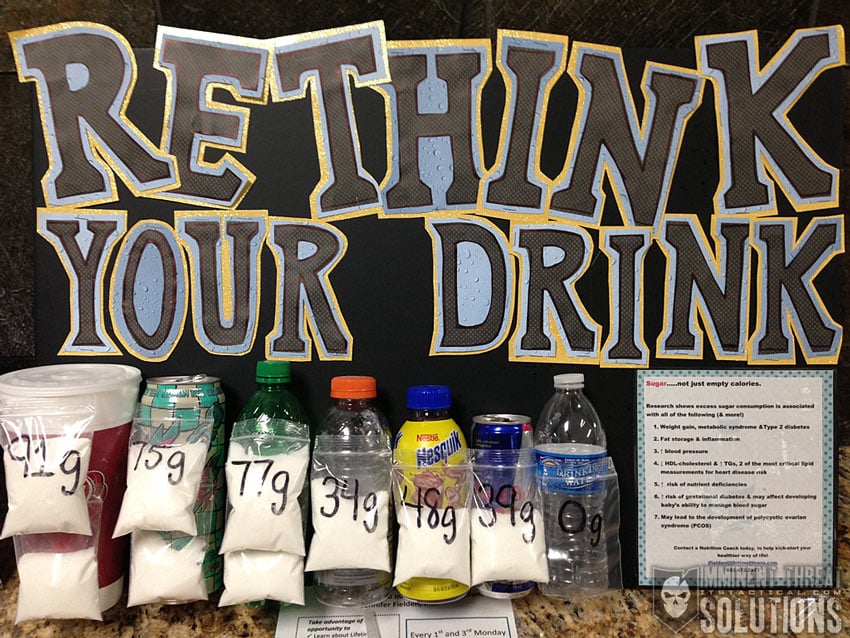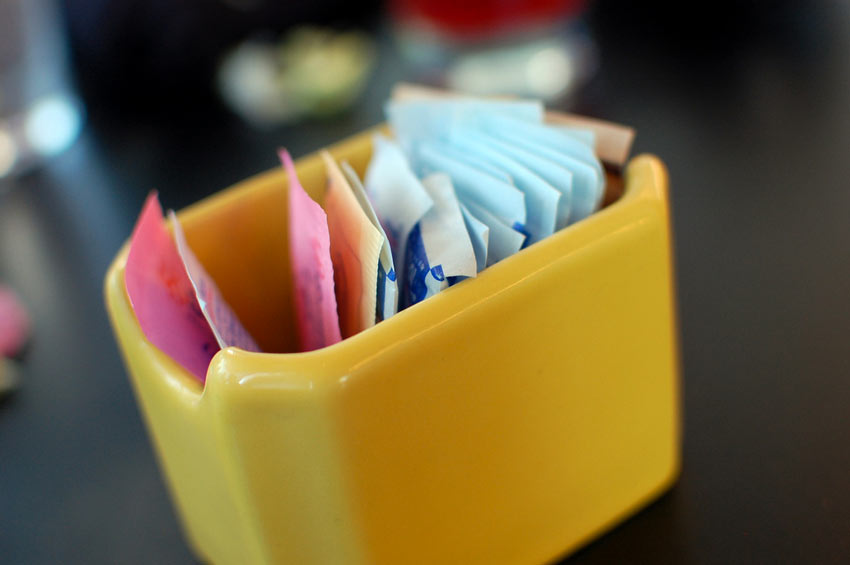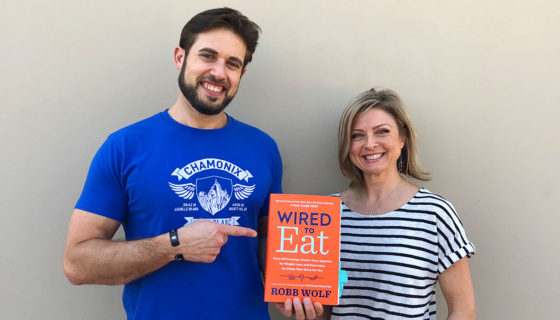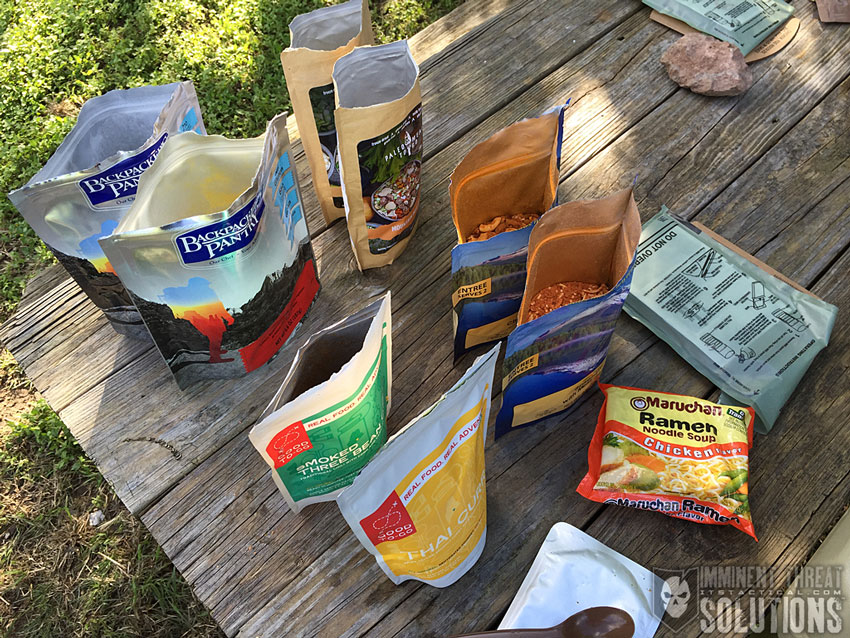Living Better: What’s the Harm in Sugar and Sweeteners?
Living Better: What’s the Harm in Sugar and Sweeteners?
- Living Better: New Year, New You
- Living Better: Starting at the Core with Flexibility
- Living Better: How to Become an Organizational Ninja
- Living Better: Be Outside, Be Active and Be Thankful
- Living Better: What’s the Harm in Sugar and Sweeteners?
- Living Better: Giving Back, Paying it Forward and Helping Others
We live in exciting times. Our world is evolving in so many ways that we’re redefining what it means to be human. For the vast majority of our species existence we’ve been meat eating, vegetable gathering “locavors.” It’s only been since the crude oil boom that eating things from other parts of the world on a regular basis has become normal. It’s only in the last few decades that food has changed from being grown to being manufactured.
Marketing has pulled a veil over the heads of the general public and the names of additives on a label look as though they were written in Klingon. The truth is that we really don’t know what we’re consuming on a daily basis. Quantity is another major issue facing us as consumers. Products advertising low-fat are extremely high in sugar and products advertising low-sugar are high in fat. There are also substances that we can barely pronounce, let alone understand.
It’s all smoke and mirrors geared for a profit margin. Even the word “organic” has been trademarked, packaged and sold under false pretenses. The word “free range” only had meaning for a year or so as well. Whatever word we use to describe natural and healthy food becomes abused and misused immediately because it’s profitable. They get away with it because due to the fact it tastes so good, all we need as consumers is an excuse to eat it. It’s the clever marketing that gives us that excuse.
The purpose of this article is to expose the truth behind sugar and artificial sweeteners. This is one of those areas where knowledge is much more than just power, it’s actually a tool that could extend your life and the lives of your children. Let’s start off with a few statistics.
Quantity
Maximum amount of sugar recommended daily:
- Men – 37.5g
- Woman – 25g

What we actually consume:
- Coca-Cola
- 12 oz. (355 ml) Can: 39g Sugar
- 20 oz. (590 ml) Bottle: 65g Sugar
- 1 Liter (34 oz) Bottle: 108g Sugar
- Rockstar Energy Drink 16 oz. (480 ml) Can: 62g Sugar
- Arizona Lemon Iced Tea 24 oz. Can: 72g Sugar
- Minute Maid Iced Tea
- 20 oz. (590 ml) Bottle: 67g Sugar
- Orange Juice (Minute Maid) 16 oz. Bottle: 48g Sugar
- Starbucks Mocha Frappuccino
- 16 oz. (Grande) drink, with whipped cream: 47g Sugar
- Jamba Juice Sunrise Banana Berry 16 oz. drink: 59g Sugar
- 7-Eleven Slurpee, Coca-Cola 40 oz. cup: 90g Sugar
- Dairy Queen Butterfinger Blizzard 16 oz. (medium): 86g Sugar
- McDonald’s Oreo McFlurry 12 oz. cup: 73g Sugar
Snacks
- Power Bar, Chocolate Peanut Butter 1 bar (65g): 23g Sugar
- Clif Bar, Banana Nut Bread 1 bar (68g): 21g Sugar
- 2 Twinkies (1 package): 37g Sugar
- Yoplait Yogurt, Strawberry 6 oz. Container: 27g Sugar
- Honey Roasted Peanuts Large Bag (168g): 24g Sugar
- Ben & Jerry’s Ice Cream, Cherry Garcia 1 pint (416g): 84g Sugar
- Jell-O Gelatin, Cherry 1 serving (1/2 cup/21g): 19g Sugar
- Snickers 1 Regular Size bar (59g) : 30g Sugar
- Skittles 1 bag (2.6 oz.): 47g Sugar
- Starburst Fruit Chews 1 package (58.7g) : 34g Sugar
- Pop Tarts, Frosted Cherry 2 Pastries: 34g Sugar
- Frosted Flakes Gold Cereal 1 Bowl (75g): 25g Sugar
- Health Valley Cereal Bar, Strawberry 1 Bar (37g): 4g Sugar
Sauces
- Ketchup 1 serving (1 Tbs/17g): 4g Sugar
- Honey BBQ Sauce 1 serving (2 Tbs/36g): 13g Sugar
- Prego Marinara Spaghetti Sauce 1 serving (1 cup): 14g Sugar
- Sweet Pickle Relish (1 Tbs/15g): 4g Sugar
When our country was founded over 200 years ago, the average person consumed about 2 pounds of sugar every year. By the 1970’s that number was up to a staggering 123 pounds. Presently, the average American consumes 152 pounds of sugar every single year. Almost hard to believe isn’t it?
What’s the Harm in Sugar?
Refined sugar comes from sucrose extracted from raw sugar cane or sugar beets. If you’re thinking that brown sugar is not refined, you’re wrong. Unless you’re getting your sugar from eating raw foods then you’re probably eating refined sugar. Consuming too much of it will cause serious problems with your health over time.
Obesity
Sugar is composed of simple carbohydrates which, when eaten, is converted into glucose for energy. Our bodies have a natural instinct geared towards the survival of our species. Part of our success over the vast period of humanity is our resiliency to the environment and our ability to adapt. One mechanism that’s been especially useful is our ability to store excess glucose in the form of fat. This helps with insulation and lengthens the amount of time that the body will stay alive without food; it’s especially helpful in the wintertime.
Keep in mind that this mechanism is in place because we’re designed to be hunters and gatherers, not couch potatoes. Obesity is a byproduct of civilization. Our bodies are not meant to live this way so we find ourselves constantly battling our natural state. According to the numbers above, consuming the first 11 ounces of a 12 ounce Coca-Cola is our maximum daily allowance of sugar. Every ounce after that is converted to storage. People become obese because their bodies are essentially preparing for a winter that will never come.
Tooth Decay
Most people are not aware of this, but when sugar is met by the natural bacteria inside your mouth, it produces acid. This acid byproduct is what actually destroys your tooth enamel and will eventually lead to tooth decay.
Hypoglycemia
Your pancreas creates insulin to control blood sugar levels. The insulin transports glucose to the cells and the excess to the liver for storage. When too much sugar is consumed, the body creates an excess of insulin that removes too much sugar from the blood. The result is low blood sugar, which can manifest itself by causing depression or lead to increased agitation.
Diabetes Mellitus
This is similar to the above problem only in reverse. The pancreas does not produce enough insulin; this is a direct result of over-consuming.
Depression
Too much sugar requires your body to use B-vitamins, calcium and magnesium for digestion. When someone experiences vitamin and mineral depletion, the results are never good. In this case the result is fatigue, depression, anxiety and a lack of energy. Not exactly a mental state that will make it easy to get to the gym. It’s a vicious cycle.
Memory and Learning
The University of California Los Angeles conducted six week-long studies involving rats, a maze and a fructose solution that was similar to soda. Through the duration of the test, it became clear that the sample that consumed a high-fructose diet began to lose their way much quicker then the rats that ate a nutritious diet. This is because a high-sugar diet causes insulin resistance that damages the brain cell’s ability to communicate with each other.
Types of Sweeteners
Photo © Steve Snodgrass
Sucrose and HFCS (High Fructose Corn Syrup)
These are both extremely high in fructose, between 50%-55%. The problem with this amount of fructose is that it can only be metabolized by the liver. This is bad because more calories, about 3 times and much as glucose, are being converted into VLDL (very-low-density lipoprotein) and fat. VLDL is the bad kind of cholesterol. I’m sure that many of you are considering the practical uses for drinks and snacks that are high in fructose. HFCS increases your glycogen supply quickly which is fantastic for the athlete or endurance racer. If your lifestyle doesn’t involve intense aerobic or anaerobic activity then there’s little place for it in a healthy diet.
Artificial Sweeteners (saccharin, acesulfame, aspartame, neotame, and sucralose)
This portion will be kept brief because there’s little reason to discuss artificial sweeteners as a good alternative to sugar. According to a study done by Harvard Health, these sweeteners have been approved by the FDA because the studies showed no connection to causing cancer and it’s considered to be a good way to fight obesity. The article also tells us that those studies were done using smaller amounts of diet soda, less than any person would actually consume in a bottle bought from the convenience store. No one really knows what’s going to come from extended use of artificial sweeteners. If you don’t mind being a guinea pig, then by all means continue using them. Just know the situation.
There’s evidence that these additives are actually addictive as well. An animal study was conducted where rats were exposed to intravenous cocaine and oral saccharine. The majority of the rats actually chose the artificial sweetener over the cocaine.
Great, So Now What?
I’m sure that you’re thinking, “so everything I like is bad. Now what?” The best forms of glucose that you can get are from whole fruit because they’re nutrient-dense, high in fiber and low in glycemic load. If we can choose fruit to satisfy our sweet tooth and water with our meals instead of soda, the hard part is done. I highly recommend that we all start juicing as well. My wife and I started juicing a couple years ago after watching a great documentary called, “Fat Sick and Nearly Dead.” It’s about a man with an autoimmune deficiency who is able to stop taking medication after he begins taking in high quantities of vitamins and fiber through juicing. We immediately found that our digestion was better and our sweet tooth could be satisfied by drinking juice from whole food. Our energy levels also greatly improved and we experienced fewer peaks and valleys throughout the day.
Some Transparency – Please don’t think that I eat perfectly and live by the above 100% of the time. Personally, I believe that life is way to short to not enjoy some of the great tasting food around us. When I travel to new countries or different geographical regions within the United States, I always eat the local food regardless of my diet. I love to experience the lives of the people in the areas that I travel to; this goes for food, activity and the nightlife.
I also make sure to have a cheat day every 7-10 days. On this day I eat whatever I’ve been craving. This serves a couple of purposes, one is that you can actually see that the longer you go without certain things like soda, the less attractive the taste becomes. Also, by shocking the digestive system every so often one can avoid diet plateaus that come with a low-calorie diet. A hard core nutritionist may say that this means to double your healthy calories by eating more fruits and nuts, but I recommend eating what you’ve been craving, even if it’s pizza or ice cream. Life’s too short, so make sure to always enjoy what you eat, just control portions and make sure it’s only once a week. And any one who knows me well will tell you, I enjoy whiskey with coke from time to time.
A good man once told me that we should strive for perfection while celebrating progress along the way. This is a great approach to maintaing a healthy diet. When my family is falling into a slump or we return from traveling, we’ll take some time to watch a documentary on food. A great show is Extreme Makeover, Weight Loss Edition. Our practices come from the information we take in. If what we see all day are Doritos commercials then we’re at a disadvantage. If we fill our heads with information regarding diet and weight management then it’s always at the front of our minds, which makes it a part of our daily decision making process. Saturate yourselves with good knowledge, not the well-funded advertisements that have helped us become the most overweight country in the world.
Join me in striving for diet perfection, but be sure to not beat yourself up when you backslide. Take time to notice your progress and let that motivate you to get back on track. The members at ITS are diverse and qualified and I can’t wait to learn from you guys during the discussion that I hope this article sparks.
“Let thy food be thy medicine and thy medicine be thy food”. Hippocrates (460-370 bc)
References and Useful Info:
- Artificial Sweeteners – http://www.sugar.org/other-sweeteners/artificial-sweeteners/
- Sugar Free, At What Cost – http://www.health.harvard.edu/blog/artificial-sweeteners-sugar-free-but-at-what-cost-201207165030
- Sugar and Mental Health – http://www.psychologytoday.com/blog/where-science-meets-the-steps/201309/4-ways-sugar-could-be-harming-your-mental-health
- The Effect of Refined Sugar on the Body – http://www.livestrong.com/article/441681-the-effect-of-refined-sugar-on-the-body/
- What Sugar Actually Does to Your Brain and Body – http://lifehacker.com/5809331/what-sugar-actually-does-to-your-brain-and-body
- Types of Sugar – http://www.sugar.org/all-about-sugar/types-of-sugar/
- Sugar Content Displayed in Sugar Cubes – http://www.sugarstacks.com/
Editor-in-Chief’s Note: Nick recently left the Navy after serving for 10 years as a Navy SEAL with multiple deployments, having been awarded the Bronze star for operations in austere environments. Nick’s been with us since the beginning here at ITS on our Advisory Board.
Title photo © Pete












Discussion